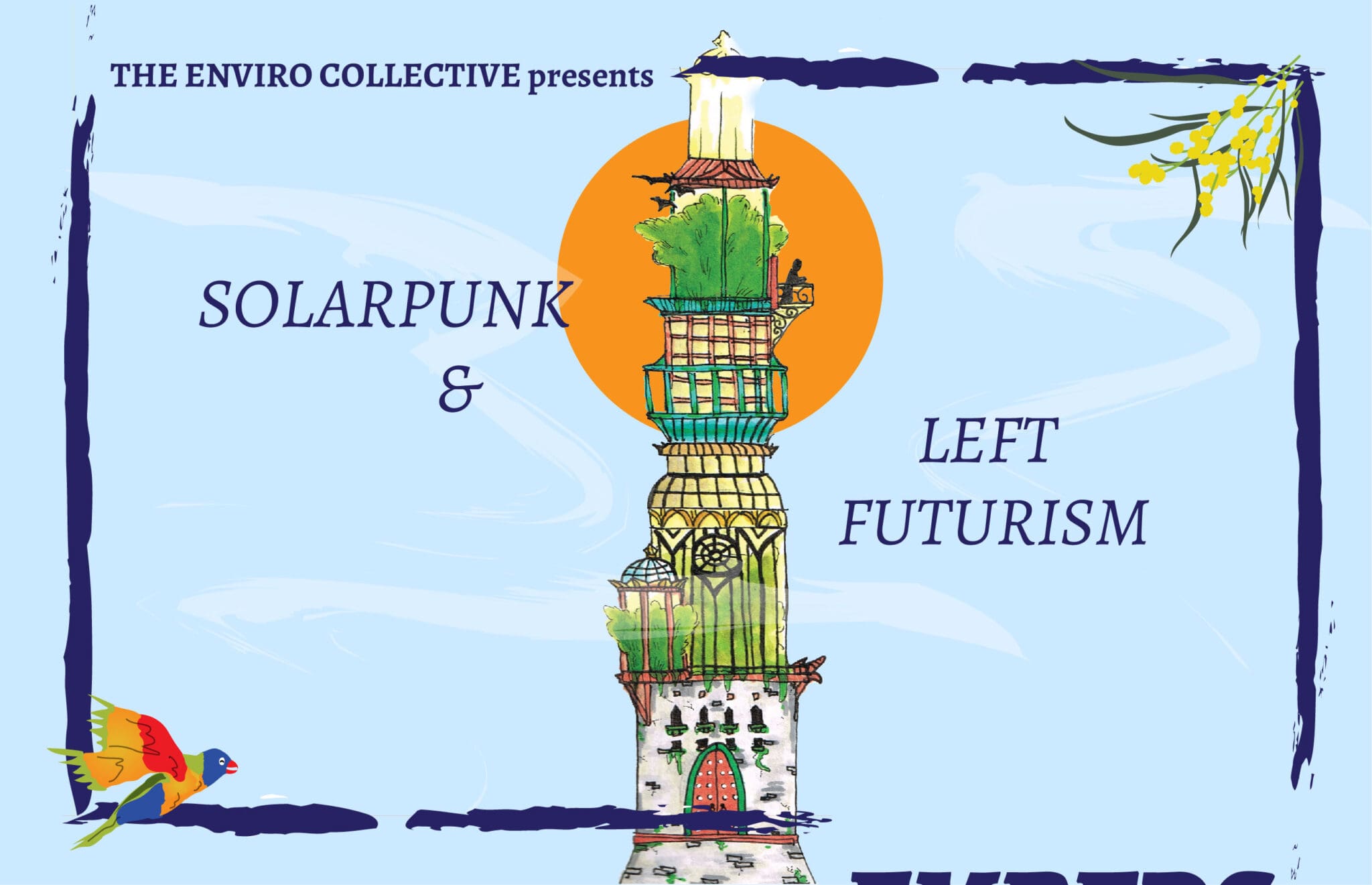‘It’s easier to imagine the end of the world than the end of capitalism’, or so the saying goes. This encapsulates a common impasse – the inherent irreconcilability of capitalism, the system that governs our lives, and the need to avert the impending doom of climate catastrophe and ecological collapse. The phrase, popularised by the late Mark Fisher, lays the foundations for his concept of capitalist realism, the common sentiment of resignation that there are no alternatives to our economic system, that we have reached the end of the world, or of history. The most potent takeaway upon seeing past the veil of depressive stupor, however, is that other worlds are not only possible, but worth fighting for.
Yet, it is not enough to hold onto this notion in the abstract. Concrete visions of post-capitalist worlds lie right in front of us in speculative fiction and, in recent development, the sub-genre and movement of Solarpunk. Renewable technologies integrated harmoniously with the built environment – stained glass panes containing solar cells, buildings bestrewn with green gardens and foliage. Solarpunk paints a plausible world in the not-so-far future where humankind lives in harmony with ecology – without the need for a post-dystopian retreat into a ‘pristine wilderness’. It is a politics of hope that rejects the alienation of industrial capitalism and atomisation of the individual. Instead, it opts for the creation of new social relations in a society where false scarcity has been abolished and self-actualisation becomes the primary form of labour.
Following in the footsteps of its Steampunk and Cyberpunk predecessors, Solarpunk examines the relationship between radical advances in technologies — in this case renewables — and how they mutually reinforce the radical transformation of society. If the Cyberpunk of the 1960s and 70s – with its imaginary of a dehumanising high-tech future – served as a dystopian warning of the current path of decay under capitalism, Solarpunk presents itself as the solution. Though initially aesthetically similar to Steampunk, it orientates itself away from the nostalgia for lost retro-futures, towards what could be.
The lineage of Solarpunk’s social content stretches far back, owing much to the imaginaries and social relations of non-Western societies and the practices of Indigenous peoples. Utopianism lays the basis for its literary lineage; built upon the approximation of ideals rather than a ‘flawless endpoint’ or idle political action. One of the first literary examples is found in News from Nowhere, authored by textile designer and socialist activist William Morris in 1890. Following a socialist revolution, Morris imagines a society where labour is no longer waged, and instead is driven by leisure and self-actualisation. Influenced from his involvement with the Arts and Crafts Movement – Solarpunk also hails the return of craftsmanship and artistry. What we see in Morris’ work is the mutual importance of imagining new worlds through literature and art, and the political action needed to realise change. Later on, the writings of Octavia Butler and Ursula K. Le Guin examined the interplay between science fiction, ecology, and utopia through the lenses of Feminism and Afrofuturism.
What differentiates the recent conception of ‘Solarpunk’ however, is that it seeks to unify and ultimately realize an alternative to capitalism amidst the fall of 20th century socialism. One aspect heavily linked to its popularisation on Tumblr is its aesthetic unity – Solarpunk is a revolt against the capitalist realism of ‘sterile iPod futurism’ and the ‘finance blue’ of homogenous skyrises. Stemming from a 2014 Tumblr post, its artistic sensibilities have been tied to a renewed Art Nouveau, Afrofuturism, the films of Hayao Miyazaki, and other imaginaries that reflect the reunification of science with culture, spirituality, and nature.
The ‘punk’ suffix carries a quality of rebellion, for Solarpunk this is the recognition that to bring about a world that we would thrive in, as well as one where future generations can prosper – there needs to be some sort of radical uprooting of the status quo. Solarpunk serves as a sort of hyperstition; a type of fiction that seeks to manifest its existence in reality by rewriting the social historical narrative of progress. This doesn’t mean it serves as a strict blueprint and nor will it autonomously arise. Hyperstitional futures form a navigating tool – one that orientates and spurs us onwards through the hope for an alternative future and the will to fight for it.
The Solarpunk movement has yet to bloom and its politics in bridging the gap between the present and future requires development. The Left’s collective vision for emancipation is fragmented, especially in the sphere of environmentalism where it is overshadowed by a subconscious acceptance of ecological collapse — itself a form of capitalist realism. The futures we strive for are only conveyed in the fleeting moments of protest and prefiguration. It is time to present a coherent vision that challenges the monopoly capitalist realism has over the cultural imaginary. In these times, hope itself is a desperately needed political act. In the words of Mark Fisher, “emancipatory politics must always destroy the appearance of a ‘natural order’, must reveal what is presented as necessary and inevitable to be a mere contingency, just as it must make what was previously deemed to be impossible seem attainable.”





